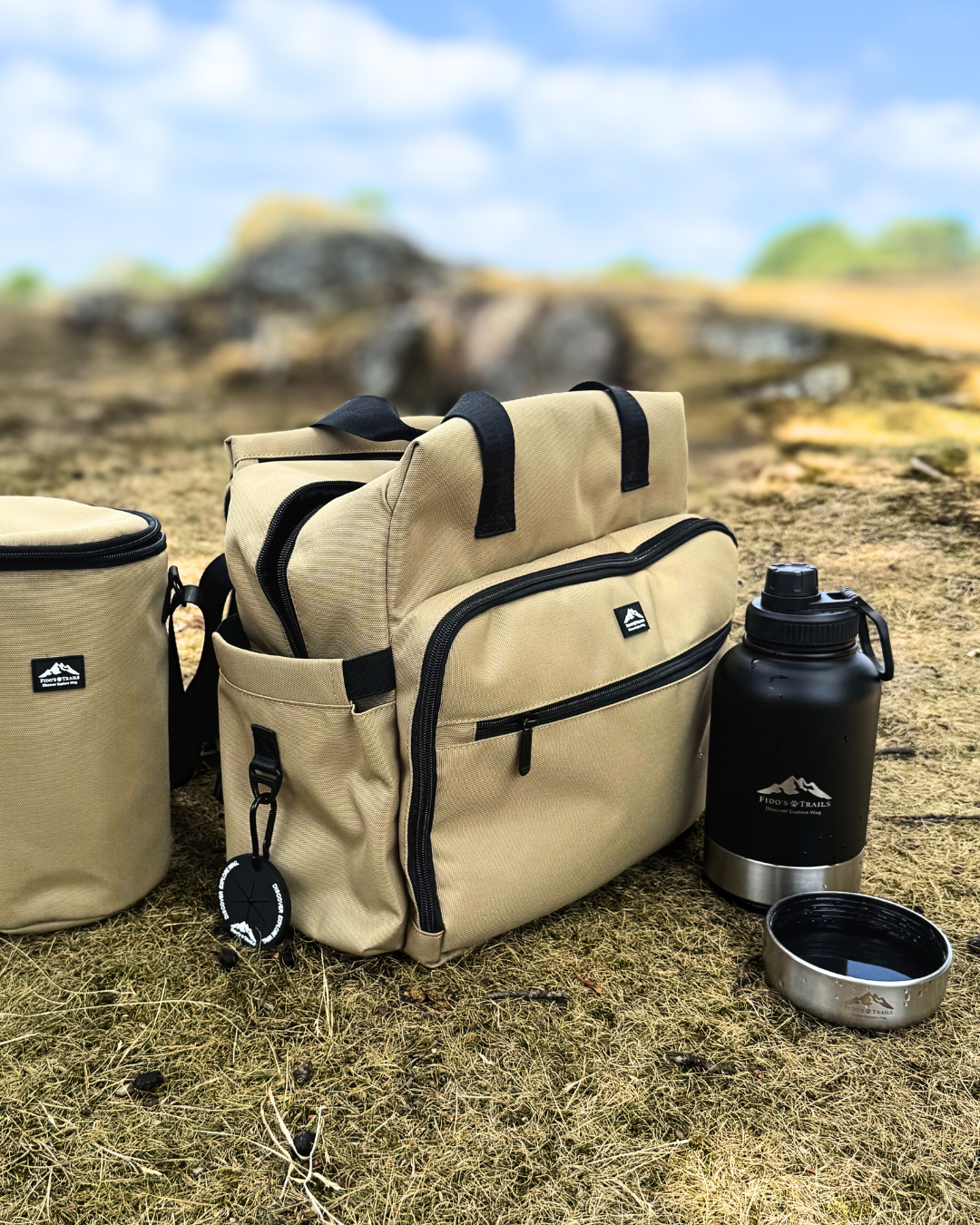
How to Hike with Your Dog (UK Guide): Trail Tips & Gear Essentials
There’s nothing quite like exploring the UK countryside with your dog by your side. From the rolling hills of the Peak District to the rugged paths of Snowdonia, hiking with your dog brings a sense of adventure you simply don’t get alone. But if you want it to be safe and stress-free, it pays to have a plan.
This guide shares what we’ve learnt as dog owners who spend weekends on the hills — from choosing the right routes to packing gear that actually works in the British outdoors.
1. Have a Plan Before You Hit the Trail
Dog-friendly trails in the UK
Not every trail is suitable for dogs. National Parks like the Lake District and Brecon Beacons welcome dogs, but some areas have livestock, seasonal restrictions, or conservation zones where leads are mandatory. Always check the National Trust or local park websites before you go.
Conditioning your dog for hiking
Think of hiking as training, not just a walk. Build up gradually — start with 30–60 minutes on gentle terrain before attempting longer climbs. Puppies’ joints (under 12–18 months) and senior dogs may need shorter, softer routes.
Getting organised before you leave
The success of a long day out often depends on how well you’ve packed. When you’re out for hours — or heading off on a weekend staycation — the last thing you want is rummaging for towels or food at the bottom of a rucksack.
That’s where the Fido’s Trails Weekender Travel Bag comes in. It’s designed to keep everything your dog needs in one organised, stylish carry. Food, water bottles, spare leads, toys, even muddy towels — every item has its place. The heavy-duty, weather-resistant fabric and clever compartments (including a food bag that keeps meals cool for hours) mean you can load the car and set off without the faff.
For us, the Weekender isn’t just a bag — it’s the foundation of the plan. It gives you peace of mind knowing you’re covered for whatever the trail throws your way.
Know the rules: lead laws & trail access
In the UK, dogs must be on a lead near livestock or during bird-nesting season (March–July on open access land). Even the most reliable recall won’t protect a sheep — so clip in when needed. A Long Line Lead is a great compromise, giving freedom without losing control.
2. Prep & Pack: Dog Hiking Gear Checklist
Hydration on hikes: bottles & bowls
Dogs need 50–100ml of water per kilogram of body weight per day — and more in hot weather or on tough climbs. The Fido’s Trails 3-in-1 Water Bottle makes this simple: no juggling separate bowls, no leaks, and two detachable containers for both water and snacks.
Carrying essentials: walking bags & treat pouches
On day hikes, we prefer to keep things light. The Tactical Dog Walking Bag sits cross-body, leaving both hands free, and has space for treats, keys, and a built-in poo bag dispenser. It’s rugged, functional, and built with adventure in mind.
If your style leans more modern, the Stone Walking Bag or our new Mushroom Walking Bag are equally spacious and practical. Both include a treat pouch and thoughtful compartments — the difference is simply in look and feel.
Whichever bag you choose, you’ll have plenty of room for trail essentials and the freedom to enjoy the walk without juggling pockets.
Safety kit: first aid, paw protection, tick checks
-
A compact first aid kit (bandages, antiseptic wipes, tweezers).
-
Paw balm or boots for stony trails or winter ice.
-
Tick remover tool for woodland or moorland hikes.
3. Trail Manners: Hiking Etiquette with Dogs
On-lead vs off-lead: when to clip in
Freedom is brilliant, but safety comes first. On narrow ridge paths, farmland, or when others are close by, a Long Line Lead provides the balance — safe exploration without risk.
Recall & obedience cues that matter
Before you unclip, your dog should have strong recall. Essential commands include “wait” at gates, “leave it” for wildlife, and “heel” when trails narrow. Having a treat pouch clipped to your Tactical Walking Bag makes rewarding good behaviour instant.
Respecting others: hikers, cyclists, livestock
Step aside for fellow walkers, call your dog close when cyclists approach, and always shut gates. Good trail manners keep paths open to dogs in the future.
4. Leave No Trace: Responsible Hiking with Dogs
Picking up dog waste on trails
Dog waste isn’t just unpleasant — it spreads disease to livestock and wildlife. Always “bag it and bin it.” Clip a Poo Bag Holder to your bag strap and you’ll never be caught out.
Staying on paths & protecting wildlife
Stick to marked trails, especially in sensitive areas like the South Downs or Yorkshire Dales. It protects ground-nesting birds, plants, and keeps routes enjoyable for all.
5. On the Trail: Check-Ins & Safety Tips
Breaks, hydration, and energy checks
Every 45 minutes, stop for a breather. Offer water from the 3-in-1 Water Bottle, share a snack, and watch for signs of fatigue — slowing down, heavy panting, or lying in shade.
Post-hike care: paws, ticks, and recovery
At the end of the walk, check paws for cuts or grit, run your hands through your dog’s coat for ticks, and dry them off with a towel stashed in the Weekender Travel Bag. Then let them rest — hikes are as tiring for them as they are for us.
Final Thoughts: Ready to Hike with Your Dog?
Hiking with your dog is one of the best ways to enjoy the UK outdoors. With a little planning, the right gear, and good trail manners, you’ll both be ready for safe, memorable adventures.
These are the exact bits of kit we trust on our own walks — explore our Dog Hiking Collection and see what works best for you.
FAQs: Hiking with Dogs in the UK
Can I hike with my puppy?
Young dogs should avoid long hikes until their joints are developed — usually 12–18 months depending on the breed. Stick to gentle, shorter walks and build up gradually.
How much water does my dog need on a hike?
Aim for 50–100ml per kilogram of body weight daily. On warm days or steep climbs, carry extra and stop regularly for water breaks.
What should I pack for a full-day dog hike?
Water bottle and bowls, long line lead, waste bags, treats, first aid kit, towel, and a bag to keep it all organised.
Are long lines better than standard leads for hiking?
Yes — a long line gives your dog safe freedom while keeping control, especially in open spaces or training environments.
